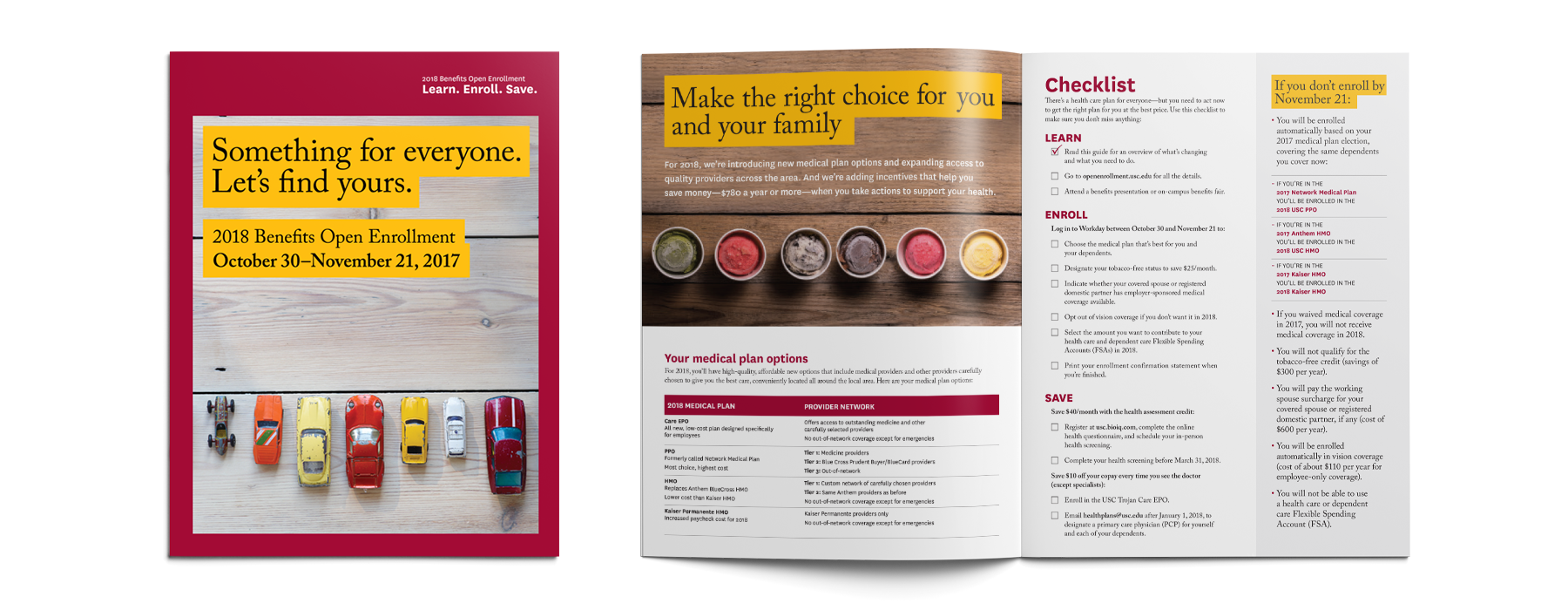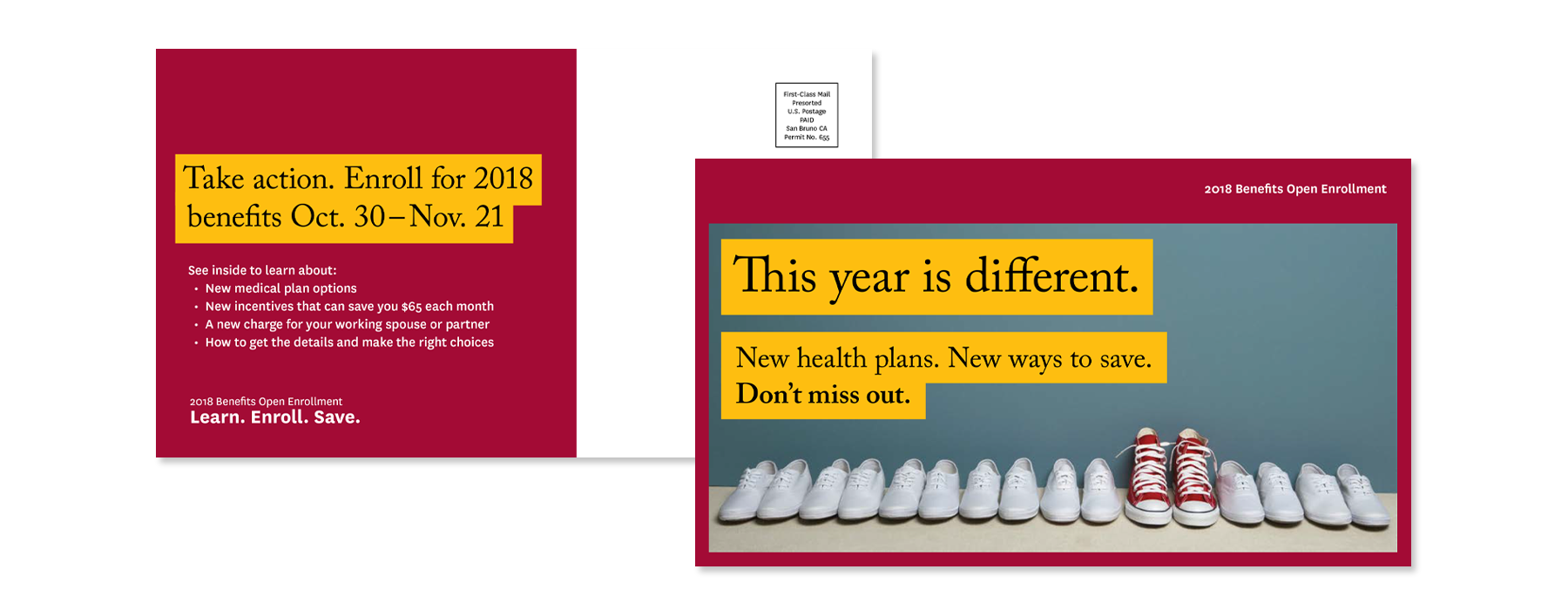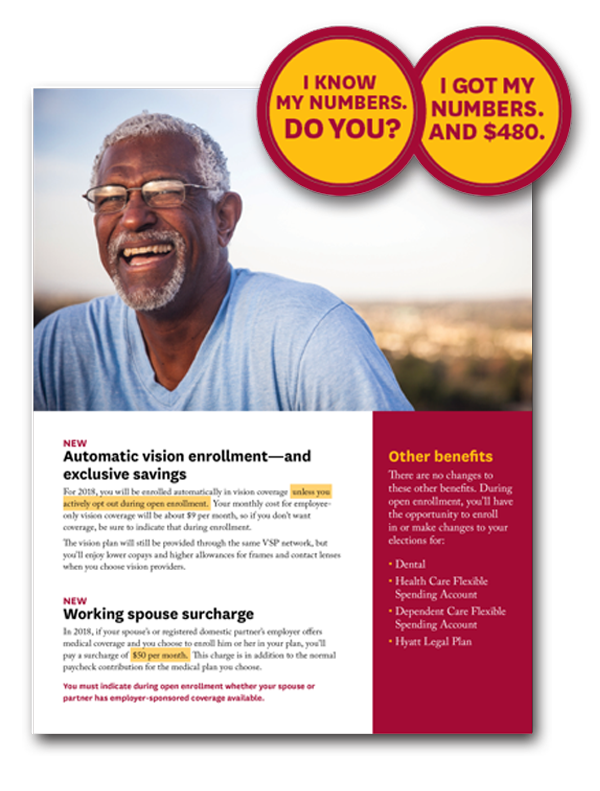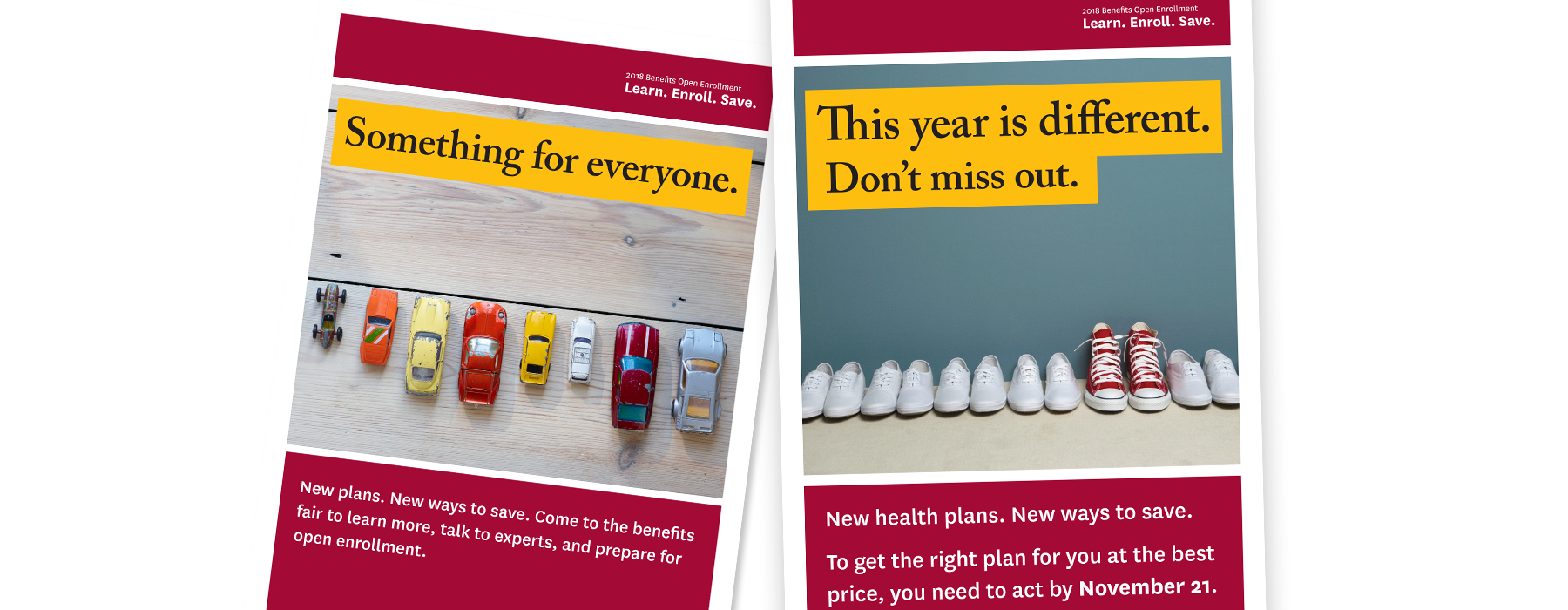
Communicating Change Management
After a decade of few to no benefit plan changes, a leading private university shook up its health plan offerings with sweeping changes for all employees. These changes required employees to take specific actions during open enrollment or risk paying more for their coverage.

This Year Will Be Different...
One of the biggest challenges with regard to the benefit plan changes was the fact that employees were comfortable with their current medical plans and had no desire to switch. The university needed a communication campaign that not only informed employees about important changes to their health plan benefits, but also encouraged them to take the necessary actions during open enrollment.
Communications about these changes were sent early and often to give employees plenty of notice about what to expect, what the changes meant for them, and what they needed to do, so they could make informed decisions by open enrollment.
We identified four significant plan changes that employees needed to understand:
- New health plan with a limited network favoring care from the university’s medical facilities and doctors
- Healthy behavior incentives, including a $40-per-month medical premium reduction for completing an online health risk assessment and biometric screening, and $25-per-month credit for being tobacco-free
- Surcharge of $50 per month to cover a spouse who has access to other employer coverage
- Defaulting employees into vision care at the employee’s expense, unless they opted out of this coverage during open enrollment

Who We Needed to Engage
- Faculty and staff at the university’s campuses and medical facilities, including groups of union-represented employees
- The faculty senate and staff assembly that had no formal authority to approve the plan changes but could facilitate, or create barriers to, broad acceptance
- The executive steering committee, which was focused on financial metrics
- University health system administrators who needed to improve the organization’s reputation
Our Approach
By talking to those who mattered most—employees and key stakeholders—we determined that the campaign would need to address these concerns. First, employees were not accustomed to actively participating in open enrollment. They needed to understand the implications of not taking action this year. Second, the new plan’s narrow network would mean far less choice of providers. Employees needed to understand which providers were in the network. Third, the university’s doctors were respected for providing quality care, but the health system was also known for administrative challenges. Employees needed reassurance that the patient experience would be improved. And finally, employees were skeptical that individual biometric data would not be shared with the university. They needed to be assured their personal information would not be used to change how much they paid for health coverage.
Early on, we conducted employee interviews to understand why they chose their current medical plans and what their perceptions of the proposed plan changes were. We formed an advisory team to provide feedback on messaging and give us insight into which communication channels were best for creating engagement with employees. We engaged HR partners and service center employees, providing them with talking points about the changes.


Applying The Principles of Behavioral Science to Drive Engagement
Another key component to our strategy was applying lessons from behavioral science. We used such insights to plan the campaign and drive engagement with all employees. We also applied our behavioral science expertise in advising university leaders on several factors in the implementation of the new plan design, including:
- Naming the medical plans to make it clear which plan the university was encouraging employees to consider
- Positioning a new incentive as a “tobacco-free credit” rather than a “smoking surcharge”
- Providing an extended period of time for employees to complete a health assessment to qualify for reduced monthly premiums, rather than requiring completion before open enrollment
- Communicating early to give people more time to understand and accept the changes
The Solution
Taking into account the university’s objectives for benefit plan changes and our understanding of employees’ perceptions, we implemented a multifaceted campaign focused on driving engagement.
First, we partnered with university leaders to gain alignment on plan design and implementation with the executive steering committee and the influential faculty senate and staff assembly. We tested communications with the advisory team to hone the messages. We advised the university’s vendors on both their roles and any related communications they created.
Next, we delivered communications targeted to unique groups of employees to drive these behaviors: make plan elections during open enrollment rather than accepting default coverage; consider the new medical plan; attest to tobacco-free status and their spouse/domestic partner’s coverage with their employer; complete an online health assessment and in-person biometric screening. Borrowing tactics from consumer marketing and executing a carefully timed campaign through a variety of channels, we effectively captured attention and motivated action.
Results
- 97% of employees actively enrolled during open enrollment
- 63% of employees registered with the biometrics vendor, and 46% completed both the health risk assessment and biometric screening within three months
- 3,000 employees, or 15% of the eligible population, enrolled in the new medical plan—exceeding the university’s goal of 1,700
See More Client Stories

A top financial services company leaps ahead with a global flexible time-off program.

Large multiemployer health and welfare fund captures attention when communicating significant benefit plan changes.

When Hitachi Vantara uses behavioral science to promote HSA investing, the number of new investment accounts jumps by 30%.
